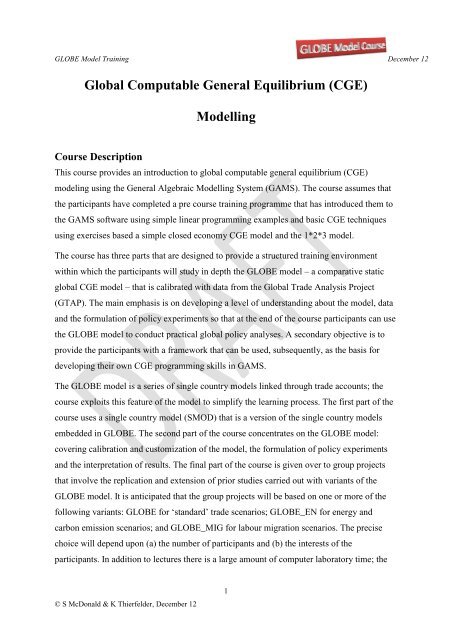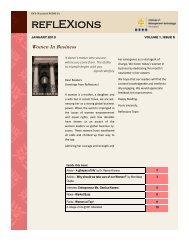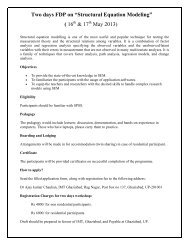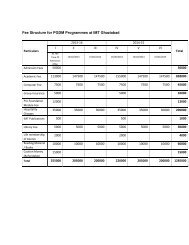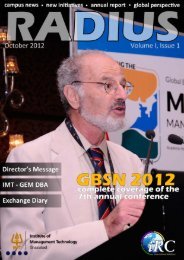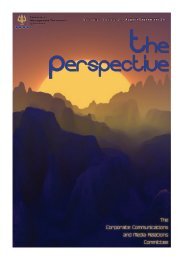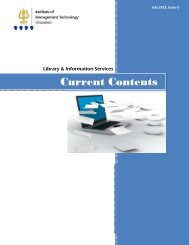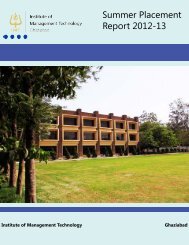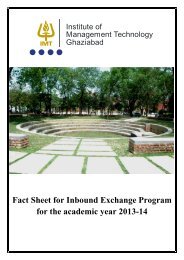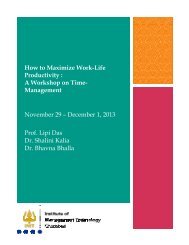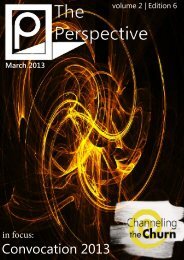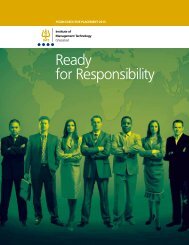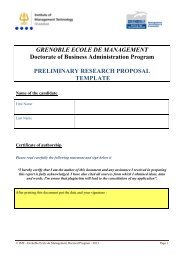Global Computable General Equilibrium (CGE) Modelling - IMT
Global Computable General Equilibrium (CGE) Modelling - IMT
Global Computable General Equilibrium (CGE) Modelling - IMT
You also want an ePaper? Increase the reach of your titles
YUMPU automatically turns print PDFs into web optimized ePapers that Google loves.
GLOBE Model Training December 12<br />
<strong>Global</strong> <strong>Computable</strong> <strong>General</strong> <strong>Equilibrium</strong> (<strong>CGE</strong>)<br />
<strong>Modelling</strong><br />
Course Description<br />
This course provides an introduction to global computable general equilibrium (<strong>CGE</strong>)<br />
modeling using the <strong>General</strong> Algebraic <strong>Modelling</strong> System (GAMS). The course assumes that<br />
the participants have completed a pre course training programme that has introduced them to<br />
the GAMS software using simple linear programming examples and basic <strong>CGE</strong> techniques<br />
using exercises based a simple closed economy <strong>CGE</strong> model and the 1*2*3 model.<br />
The course has three parts that are designed to provide a structured training environment<br />
within which the participants will study in depth the GLOBE model – a comparative static<br />
global <strong>CGE</strong> model – that is calibrated with data from the <strong>Global</strong> Trade Analysis Project<br />
(GTAP). The main emphasis is on developing a level of understanding about the model, data<br />
and the formulation of policy experiments so that at the end of the course participants can use<br />
the GLOBE model to conduct practical global policy analyses. A secondary objective is to<br />
provide the participants with a framework that can be used, subsequently, as the basis for<br />
developing their own <strong>CGE</strong> programming skills in GAMS.<br />
The GLOBE model is a series of single country models linked through trade accounts; the<br />
course exploits this feature of the model to simplify the learning process. The first part of the<br />
course uses a single country model (SMOD) that is a version of the single country models<br />
embedded in GLOBE. The second part of the course concentrates on the GLOBE model:<br />
covering calibration and customization of the model, the formulation of policy experiments<br />
and the interpretation of results. The final part of the course is given over to group projects<br />
that involve the replication and extension of prior studies carried out with variants of the<br />
GLOBE model. It is anticipated that the group projects will be based on one or more of the<br />
following variants: GLOBE for ‘standard’ trade scenarios; GLOBE_EN for energy and<br />
carbon emission scenarios; and GLOBE_MIG for labour migration scenarios. The precise<br />
choice will depend upon (a) the number of participants and (b) the interests of the<br />
participants. In addition to lectures there is a large amount of computer laboratory time; the<br />
© S McDonald & K Thierfelder, December 12<br />
1
GLOBE Model Training December 12<br />
course emphasises the development of practical skills and the laboratory sessions provide<br />
participants with an environment within which they can develop their programming skills.<br />
Prior to the course participants are provided with a pre course training programme. This is a<br />
self study programme that contains a series of structured exercises; the package of training<br />
materials also contains sample solutions for all the exercises. Participants with prior<br />
experience of <strong>CGE</strong> modelling and/or GAMS typically find the supplied materials are<br />
adequate for self study purposes. Participants new the <strong>CGE</strong> modelling and GAMS, and<br />
without access to persons with such experience, occasionally need additional support; this is<br />
available by email for a small additional fee. Participants should begin working on the pre<br />
course training materials two months prior to the course and should anticipate spending<br />
approximately 40 hours on the exercises.<br />
Hard copies of all the PowerPoint presentations and documentation needed for the course are<br />
provided to participants with a binder during the course. At the end of the course participants<br />
are provided with two CD-ROMs. The first contains a limited license version of the GAMS<br />
software: this is provided by the GAMS Corporation and provides participants with time to<br />
purchase a license from the GAMS Corporation (advice on appropriate minimum<br />
specifications is provided). The second CD-ROM contains the following:<br />
i) the GLOBE model, associated files and exercises used during the course;<br />
ii) the standard GLOBE model and associated files;<br />
iii) the GAMS programmes for converting the GTAP database to a SAM structure appropriate for<br />
GLOBE and for aggregating the resultant GDX database;<br />
iv) the model files for ALL the group projects undertaken during the course;<br />
v) the SeeResults programme for accessing model results;<br />
vi) the basic SMOD model, data (based on data from the GTAP database) and basic exercises;<br />
vii) a series of structured exercises that extend the basic SMOD model, e.g., adding nested<br />
production structures, multiple trade partners, VAT, etc., together with requisite data (based on<br />
data from the GTAP database);<br />
The exercises provided as part of the course emphasise the development of the skills required<br />
to formulate policy experiments, interpret results and to develop the (limited) programming<br />
skills necessary to implement policy experiments. Considerable private study will be required<br />
if graduates of this course wish to develop and extend <strong>CGE</strong> models, i.e., change and add<br />
behavioural relationships. Since a large proportion of applied <strong>CGE</strong> studies require some<br />
© S McDonald & K Thierfelder, December 12<br />
2
GLOBE Model Training December 12<br />
adjustments to the model graduates who wish to conduct <strong>CGE</strong> modelling on a sustained basis<br />
should anticipate devoting time to developing the requisite skills.<br />
Course Aims<br />
To provide an introduction the GLOBE <strong>CGE</strong> model so that participants can<br />
i) Appreciate the structure of global <strong>CGE</strong> models;<br />
ii) appreciate the contexts within which the application of <strong>CGE</strong> policy analysis techniques are<br />
appropriate;<br />
iii) implement policy experiments using the GLOBE model; and<br />
iv) interpret the results from global <strong>CGE</strong> models.<br />
Course Objectives<br />
On completion of the course the participants will have:<br />
i) the ability to identify multi regional policy issues that can be appropriately evaluated using <strong>CGE</strong><br />
techniques;<br />
ii) the skills to implement policy experiments in the GLOBE <strong>CGE</strong> model; and<br />
iii) the ability to interpret the results from global <strong>CGE</strong> models.<br />
© S McDonald & K Thierfelder, December 12<br />
3
GLOBE Model Training December 12<br />
Outline<br />
Day 1:<br />
0830 Welcome Introductions , Course Structure and Content<br />
Overview of the course<br />
0900 Introduction to Social Accounting Matrices<br />
Introduction to Social Accounting Matrices (SAM).<br />
0945 A SAM Approach to Modeling<br />
The SAM approach to modeling; introduction to macroeconomic closure conditions<br />
1015 Morning Break<br />
1045 Introduction to the Single Country <strong>CGE</strong> Model (SMOD)<br />
Model data; model structure<br />
1145 Lab 1: Introduction to GAMS, GAMSIDE, GDX and GDXViewer<br />
Configuring GAMS and GAMSIDE; using GDX and GDXViewer<br />
1230 Lunch Break<br />
1330 Prices and Accounting Identities in <strong>CGE</strong> Models<br />
Price definitions, accounting identities and price linkages in a <strong>CGE</strong> models<br />
1430 Tax Instruments & Revenues in SMOD <strong>CGE</strong> Model<br />
The tax system and options in the SMOD Model<br />
1520 Final Demand<br />
Household utility functions; government and investment demand<br />
1545 Afternoon Break<br />
1615 Lab 2: Model Set up and Calibration<br />
Introduction to the GTAP Based Single Country Model<br />
1715 Lab 3: Experiment 1 – trade tax reforms<br />
Trade Tax Experiments for multiple experiments<br />
© S McDonald & K Thierfelder, December 12<br />
4
GLOBE Model Training December 12<br />
1800 End of the Day<br />
Day 2:<br />
0830 Lab 4: Experiment 1 – trade tax reforms<br />
Trade Tax Experiments; using LOOPS to run experiments<br />
0930 Production Relationships in a Simple <strong>CGE</strong> Model<br />
Nested production functions; factor use taxes and first order conditions<br />
1015 Morning Break<br />
1115 Market Clearing and Macroeconomic Closures in a <strong>CGE</strong> Model<br />
Macroeconomic closures<br />
1200 Lab 5: Experiment 2 – trade taxes and tax replacement<br />
Trade Tax Experiments and tax replacement<br />
1300 Lunch Break<br />
1400 Lab 6: Accessing Model Results using SeeResults<br />
Using SeeResults to access results from <strong>CGE</strong> models<br />
1445 Factor Market Clearing in a Simple <strong>CGE</strong> Model<br />
Factor market clearing conditions<br />
1515 Lab 7: Experiment 3 – trade taxes and factor markets<br />
Trade Tax Experiments; using LOOPS to run closures and experiments<br />
1545 Afternoon Break<br />
1615 Lab 7 (cont): Experiment 3 – trade taxes and factor markets<br />
Trade Tax Experiments; using LOOPS to run closures and experiments<br />
1800 End of the Day<br />
Day 3:<br />
0830 Overview of the GLOBE Model<br />
Overview of the structure of the GLOBE model<br />
© S McDonald & K Thierfelder, December 12<br />
5
GLOBE Model Training December 12<br />
0850 Introduction to the GLOBE Database<br />
Introduction to GTAP data in a SAM format<br />
0930 Trade Relationships in the GLOBE Model<br />
Introduction to the behavioural relationships for trade – imports and exports<br />
1000 Additional Price Linkages in the GLOBE Model<br />
Price relationships (for trade) in the GLOBE model.<br />
1045 Morning Break<br />
1115 Lab 8: Running a Policy Experiment in GLOBE<br />
Setting up, running and extracting results to SeeResults for a simple trade liberalisation scenario in the<br />
4*3*3 GLOBE model<br />
1145 Lab 9: Implementing and Interpreting a Trade Policy Experiment<br />
Interpreting the results for a trade liberalisation scenario in the 4*3*3 GLOBE model<br />
1300 Lunch Break<br />
1400 Taxes and Efficiency in the GLOBE Model<br />
Introduction to the tax rate and efficiency parameter equations.<br />
1430 Lab 10: Model Set up and Calibration<br />
Additional options for setting up and calibrating the GLOBE model.<br />
1500 Lab 11: Market Clearing and Macroeconomic Closures Rules in GLOBE<br />
Macroeconomic closure and tax replacement options in GLOBE<br />
1545 Afternoon Break<br />
1615 Lab 11 (cont): Market Clearing and Macroeconomic Closures Rules in GLOBE<br />
Factor market clearing options in GLOBE<br />
1745 Allocation of participants to Group Projects<br />
Group 1: GLOBE: DOHA Development Agenda.<br />
Group 2: GLOBE_EN: Taxing carbon emissions.<br />
© S McDonald & K Thierfelder, December 12<br />
6
GLOBE Model Training December 12<br />
1800 End of the Day<br />
1900 Course Dinner<br />
Day 4:<br />
0830 Lab 12: Interpreting Model Results<br />
Interpreting model results from an implementation of GLOBE.<br />
1045 Morning Break<br />
1115 Lab 12 (cont): Interpreting Model Results<br />
Interpreting model results from an implementation of GLOBE<br />
1215 GLOBE_EN<br />
Introduction to the GLOBE_EN (energy) model.<br />
1245 Lunch Break<br />
1345 Lab 12: Replication of Application<br />
Replication of key simulations in applications.<br />
1545 Afternoon Break<br />
1615 Lab 13: Extensions to the applications<br />
Groups develop extensions to the applications<br />
1745 Lab 14: Data support programmers – GTAPinaSAM; SAMGator<br />
Extracting GTAP data to a SAM format; transforming SAMG(tap) for GLOBE; Aggregating global<br />
SAMs.<br />
1800 End of the Day<br />
Day 5:<br />
0800 Lab 15: Extensions & Analyses of the applications<br />
Groups complete extensions and begin analyses of the applications<br />
1030 Morning Break<br />
1100 Lab 15 (cont): Extensions & Analyses of the applications<br />
Groups complete extensions and begin analyses of the applications<br />
© S McDonald & K Thierfelder, December 12<br />
7
GLOBE Model Training December 12<br />
1230 Lunch Break<br />
1330 Lab 16: Analyses of the applications<br />
Groups complete analyses of the applications<br />
1545 Afternoon Break<br />
1615 Complete Presentations<br />
Groups complete PowerPoint presentations..<br />
1700 Group 1<br />
Team presentation<br />
1745 Group 2<br />
Team presentation<br />
1830 End of the Day<br />
1930 Closing Reception<br />
End of the Course<br />
© S McDonald & K Thierfelder, December 12<br />
8
GLOBE Model Training December 12<br />
Participants<br />
The number of participants should not exceed 16: with only 3 staff experience indicates that<br />
we cannot support more than this number (in fact for our annual short course we would use a<br />
minimum of 4 instructors plus 2 support staff for 16 to 20 participants).<br />
Facilities<br />
Computer laboratory.<br />
All PCs highly specified (at least core i3) with at least 4GB RAM and substantial amounts of<br />
HD capacity. Preferably with wide screen monitors but if not with largish monitors (17 inch<br />
plus).<br />
PC for presenter will require the same specification plus linked to a data projector.<br />
Software:<br />
MS Office 2003 or 2007 or 2010; in particular MS Excel and MS PowerPoint.<br />
<strong>General</strong> Algebraic Modeling System (GAMS); this will be provided by the instructors who<br />
will also arrange a (3 month) course licence from the GAMS Corporation. (see<br />
www.gams.com for details about GAMS and pricing). [A decision on purchase can be<br />
delayed until after the course]<br />
Lecture theatre:<br />
Lecture room with data projector (lectures could be held in the computer laboratory but if a<br />
separate lecture theatre is available it will be better – a change of scenery - given the intensity<br />
of the course)<br />
Pre Course Training Materials:<br />
Pre course training materials that encompass a series of structured exercises that provide an<br />
introduction to GAMS and <strong>CGE</strong> modelling will be provided. These require participants to<br />
engage in up 40 hours of self-directed study prior to the course.<br />
Course Materials:<br />
We will bring a copy of the course handouts (PowerPoint slides, exercise files, technical<br />
documents, etc.,); these will need to be photocopied in India by <strong>IMT</strong> for the participants.<br />
© S McDonald & K Thierfelder, December 12<br />
9
GLOBE Model Training December 12<br />
Ideally a 4inch/10cm A4 ‘binder’ will be provided by <strong>IMT</strong> for each participant. We do not<br />
provide electronic copies of the course ‘handouts’.<br />
We will provide a memory stick/flash drive to each participant at the end of the course that<br />
contains all the code used in the course, pdf copies of technical documents, miscellaneous additional<br />
training exercises, etc.<br />
We will send you templates for preparing badges and desk labels for each participant. We will<br />
provide the lanyards for the badges, course pens and pencils.<br />
Morning and Afternoon Breaks:<br />
<strong>IMT</strong> should provide refreshments – tea, chai, coffee, bottle water, etc., for the participants<br />
and instructors at breaks mid-morning and mid-afternoon. The time slots are in the<br />
programme above.<br />
Lunch Breaks:<br />
<strong>IMT</strong> should provide light lunch for the participants and instructors each day. Time slots are in<br />
the programme.<br />
Course Dinner:<br />
Ideally there should be a course dinner for the participants and instructors mid-way through<br />
the course. See programme.<br />
Closing Reception:<br />
A closing reception after the course finishes needs to be included. We will provide all<br />
participants with certificates and memory sticks for their future use.<br />
Internet Access<br />
Either at <strong>IMT</strong> during the day or from the hotel.<br />
Costings<br />
Flights:<br />
Current quote: £1250 return per instructor (we are ignoring the USA to UK leg for Prof<br />
Thierfelder)<br />
© S McDonald & K Thierfelder, December 12<br />
10
GLOBE Model Training December 12<br />
Honoraria<br />
£1000 per instructor<br />
Per diem<br />
£40 per day per instructor (to cover all ground transport, visa costs, breakfasts and evening<br />
meals etc.)<br />
Hotels<br />
<strong>IMT</strong> to book the hotel and pay directly; services to include laundry costs.<br />
Total Cost (Provisional)<br />
£7,500<br />
© S McDonald & K Thierfelder, December 12<br />
11


